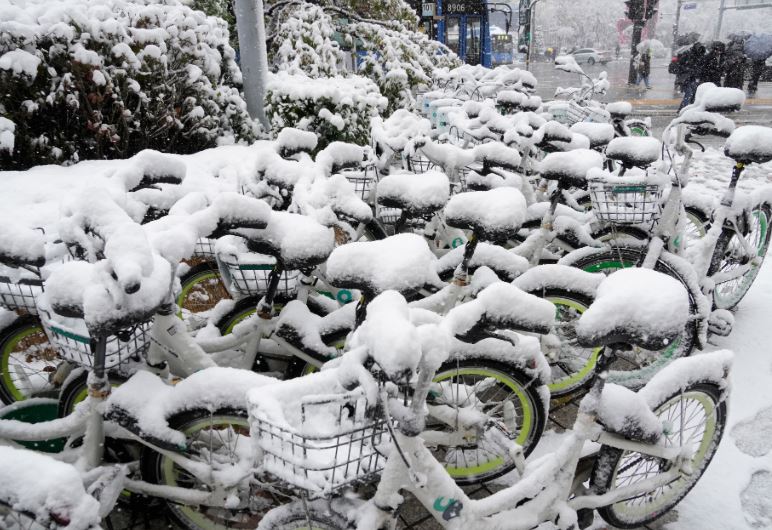Seoul, South Korea, experienced an unprecedented November snowstorm on Wednesday, marking the heaviest snowfall for the month in over a century. The city was covered with 18 cm (7.1 inches) of snow by 3 p.m., as reported by the Korea Meteorological Administration, surpassing the previous record set in 1972.
The snowstorm, which started overnight, disrupted life across the capital and beyond:

- Transportation Chaos: Over 300 flights were canceled or delayed at South Korean airports, and nearly 100 ferry services to islands were halted due to the weather. The morning commute was severely affected by icy roads, leading to traffic congestion and multiple accidents.
- Public Safety: The storm was responsible for at least two fatalities, with icy conditions and falling debris from buildings and construction sites posing significant risks to pedestrians. Power outages affected numerous households, particularly in Seoul’s northern districts where snowfall was heaviest.
- Emergency Response: The Seoul Metropolitan Government, in coordination with the Interior Ministry, escalated disaster response measures. Authorities warned of the potential for further disruptions due to the high moisture content in the snow, which could cause additional damage to infrastructure.
- Government Action: President Yoon Suk Yeol directed the safety and transport ministries to fully mobilize resources to mitigate the impact of the snow, emphasizing the need to minimize inconvenience and ensure public safety.
The meteorological conditions contributing to this heavy snowfall were explained by Youn Ki-han, director at Seoul’s Meteorology Forecast Division. He noted that unusually warm sea temperatures contrasted sharply with cold air masses moving in from the north, leading to significant snow accumulation exacerbated by consistent westerly winds.
Tourists and residents alike took to the streets to capture or experience the rare snowy landscape, with iconic spots like Gyeongbok Palace becoming picturesque backdrops for snow selfies. However, the storm’s severity has initiated discussions on improving emergency responses and infrastructure resilience against such extreme weather events, highlighting both the beauty and the challenges of unexpected weather phenomena.



